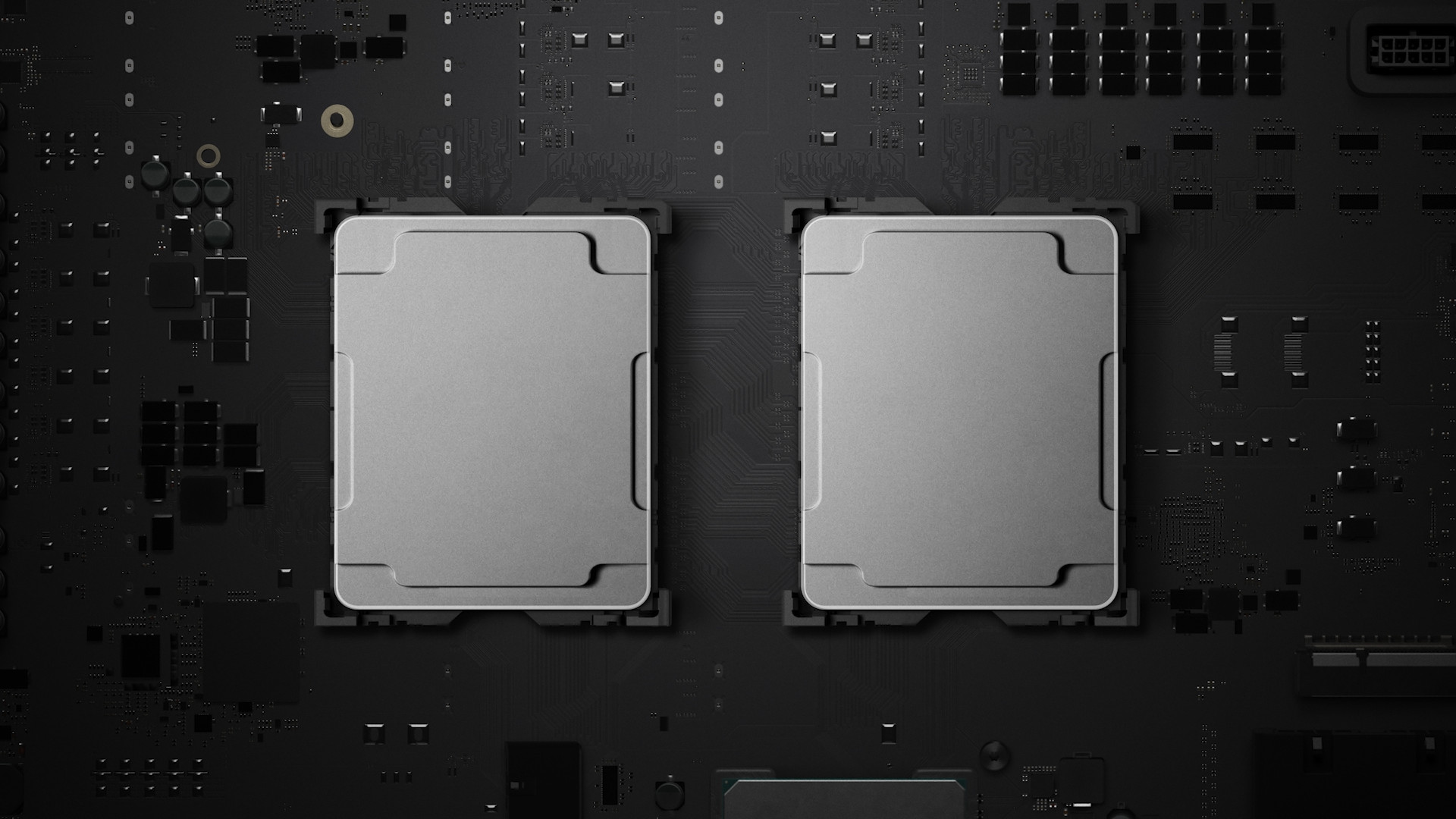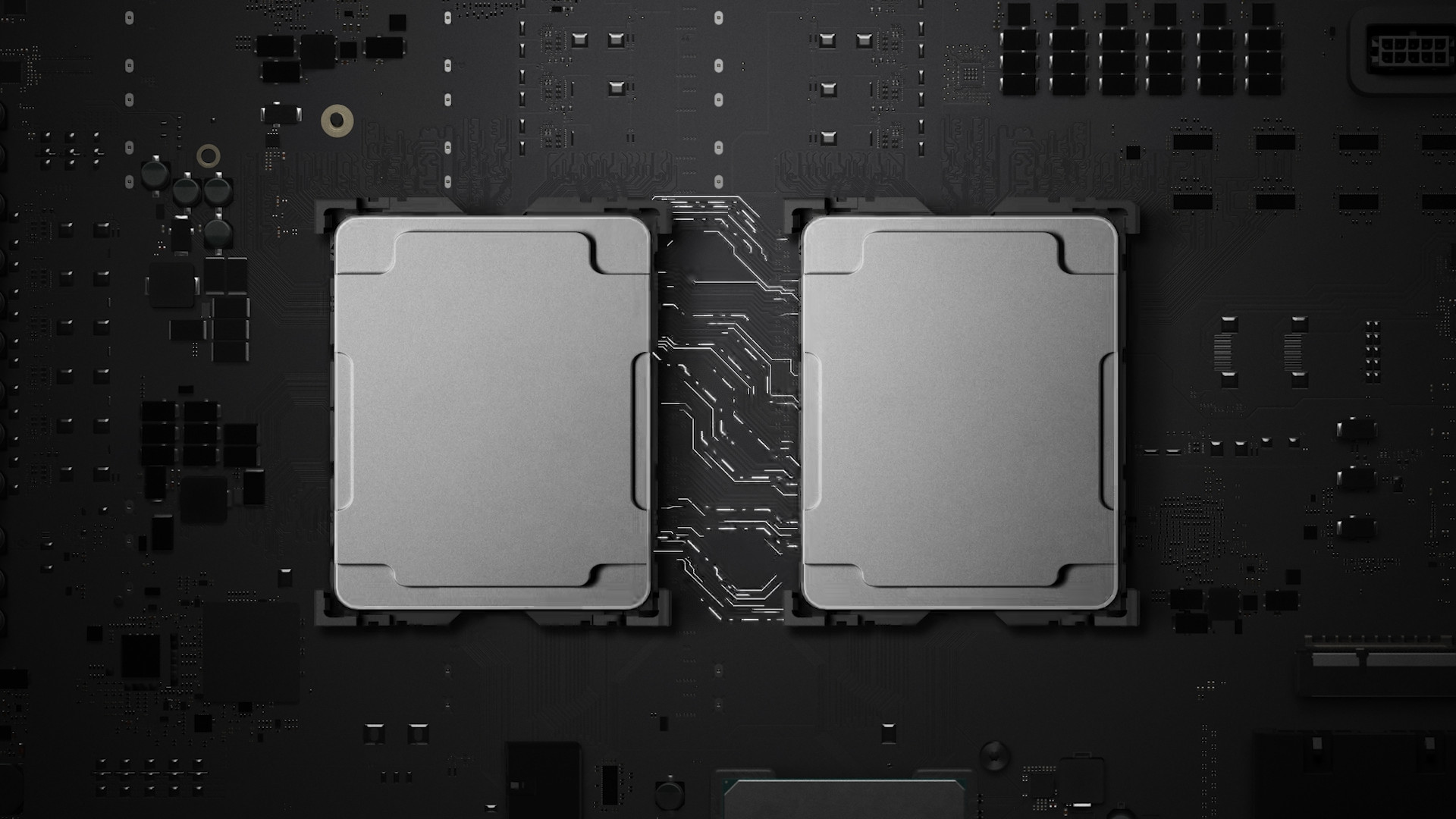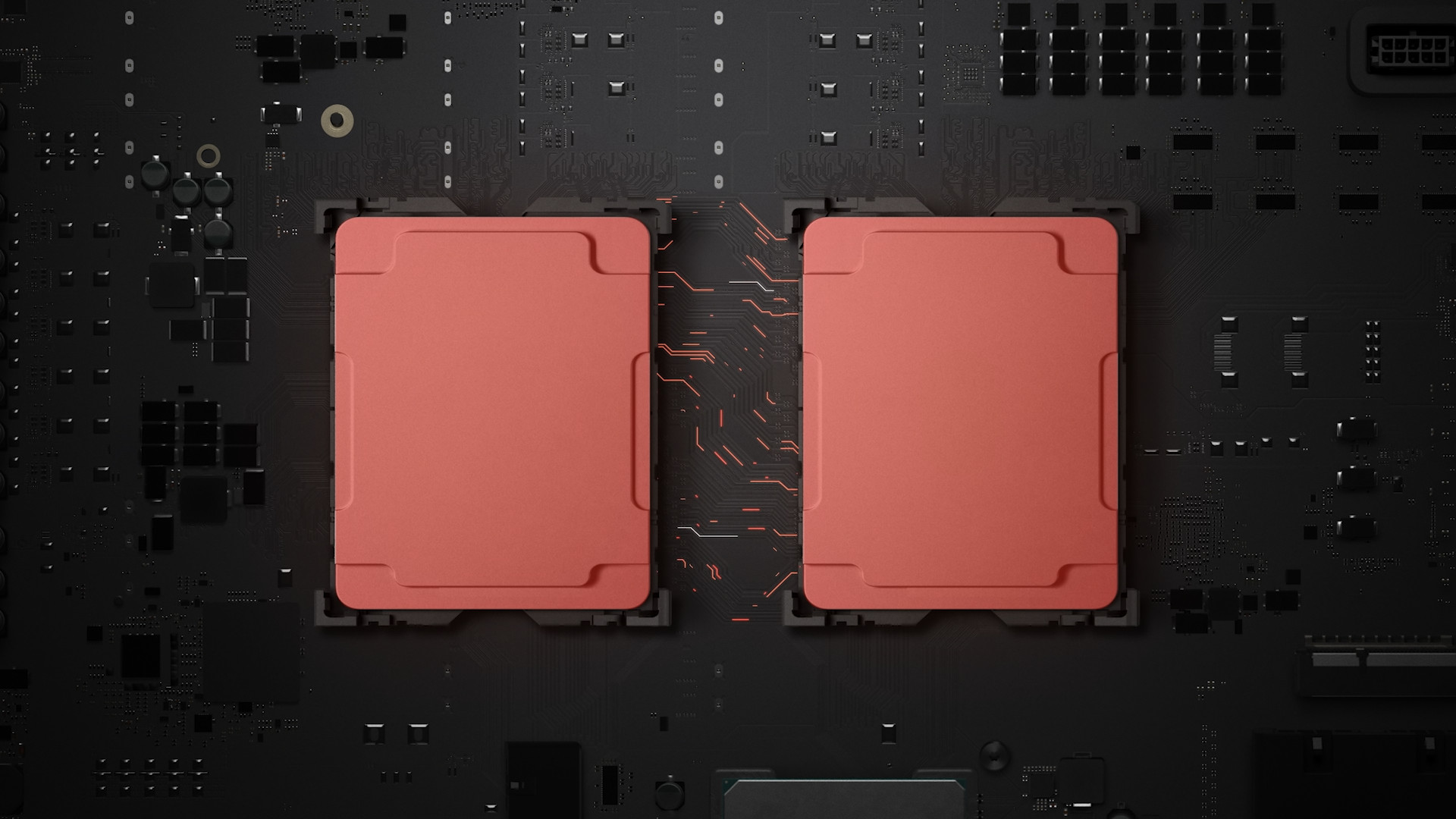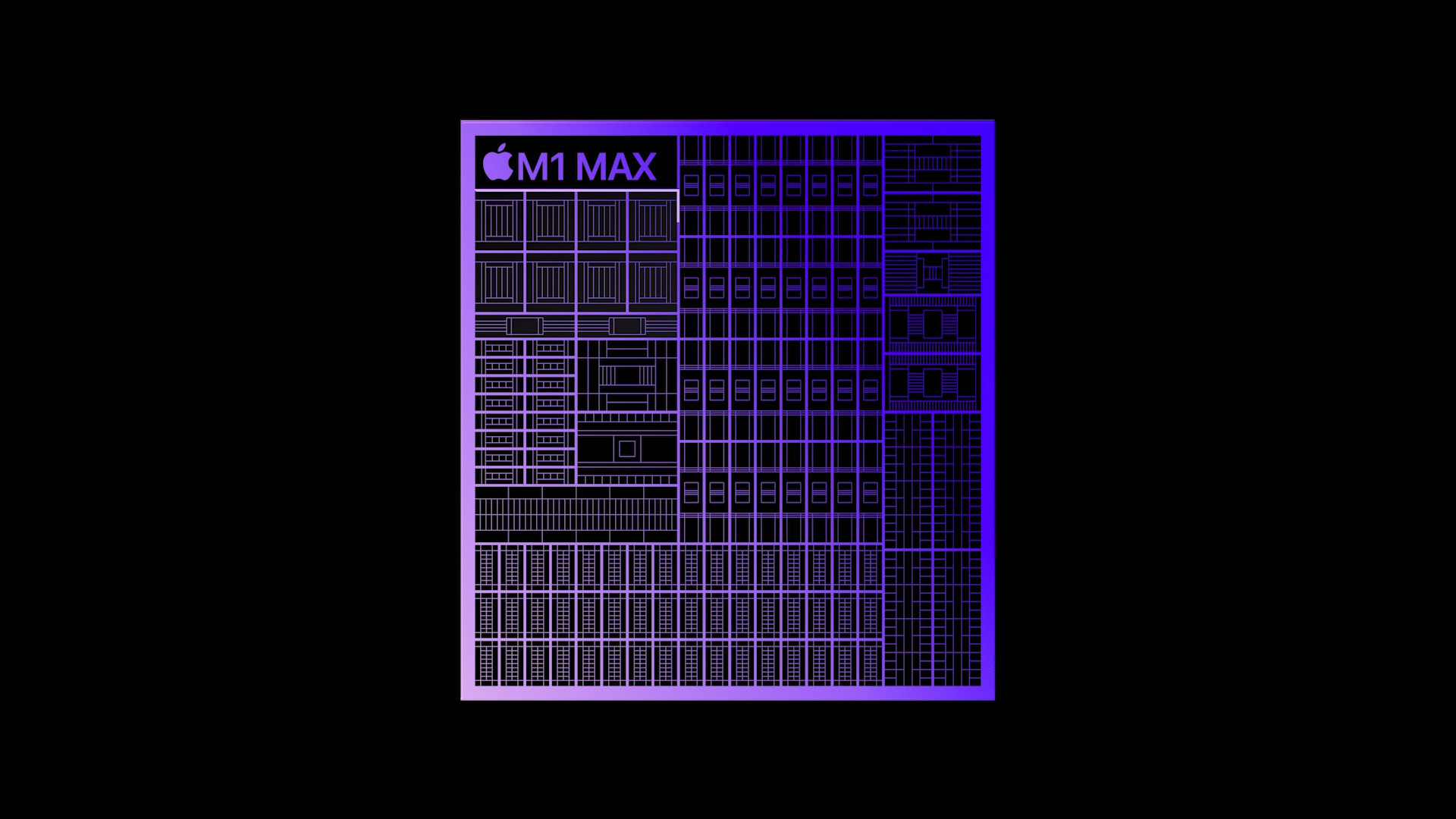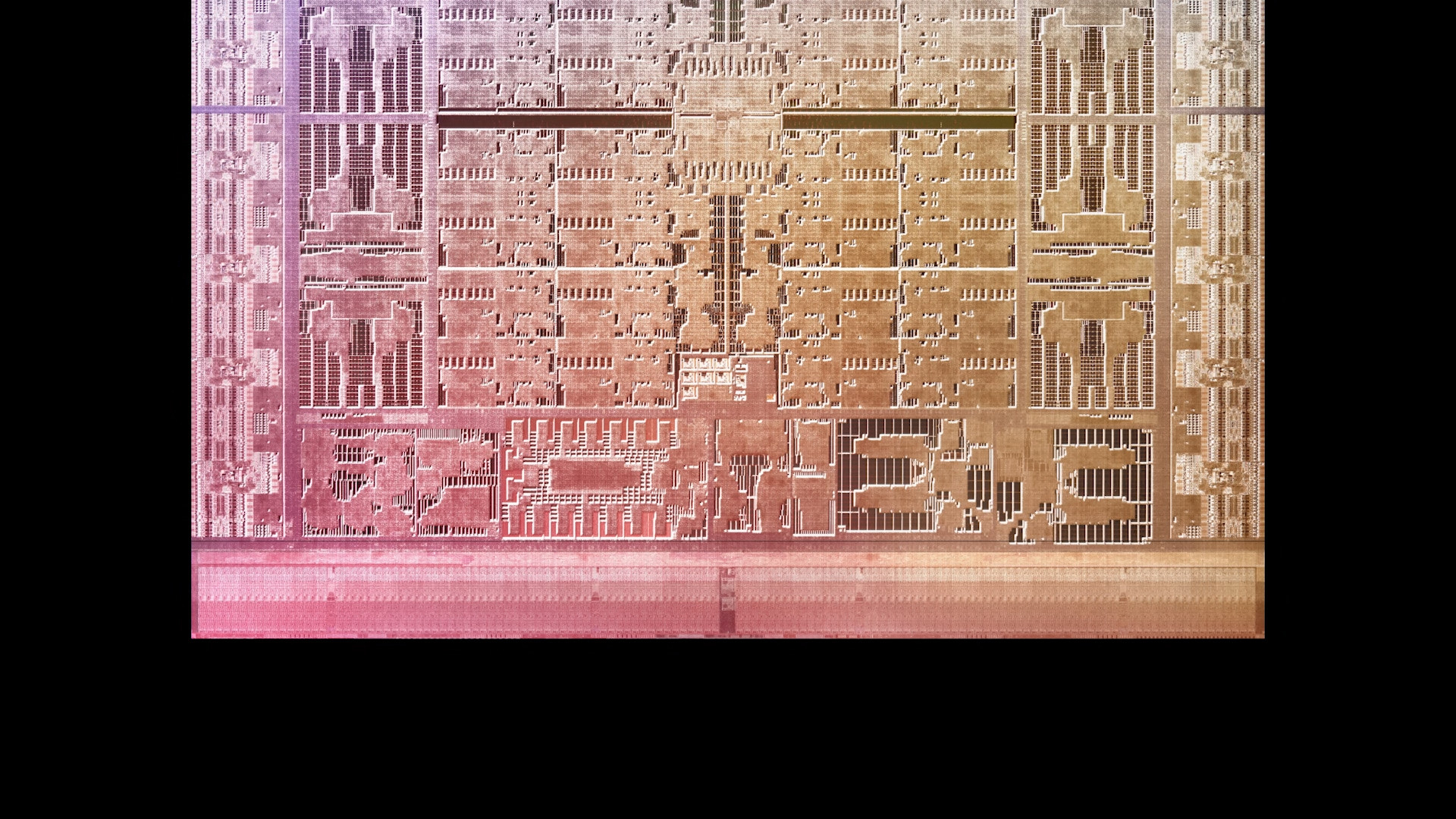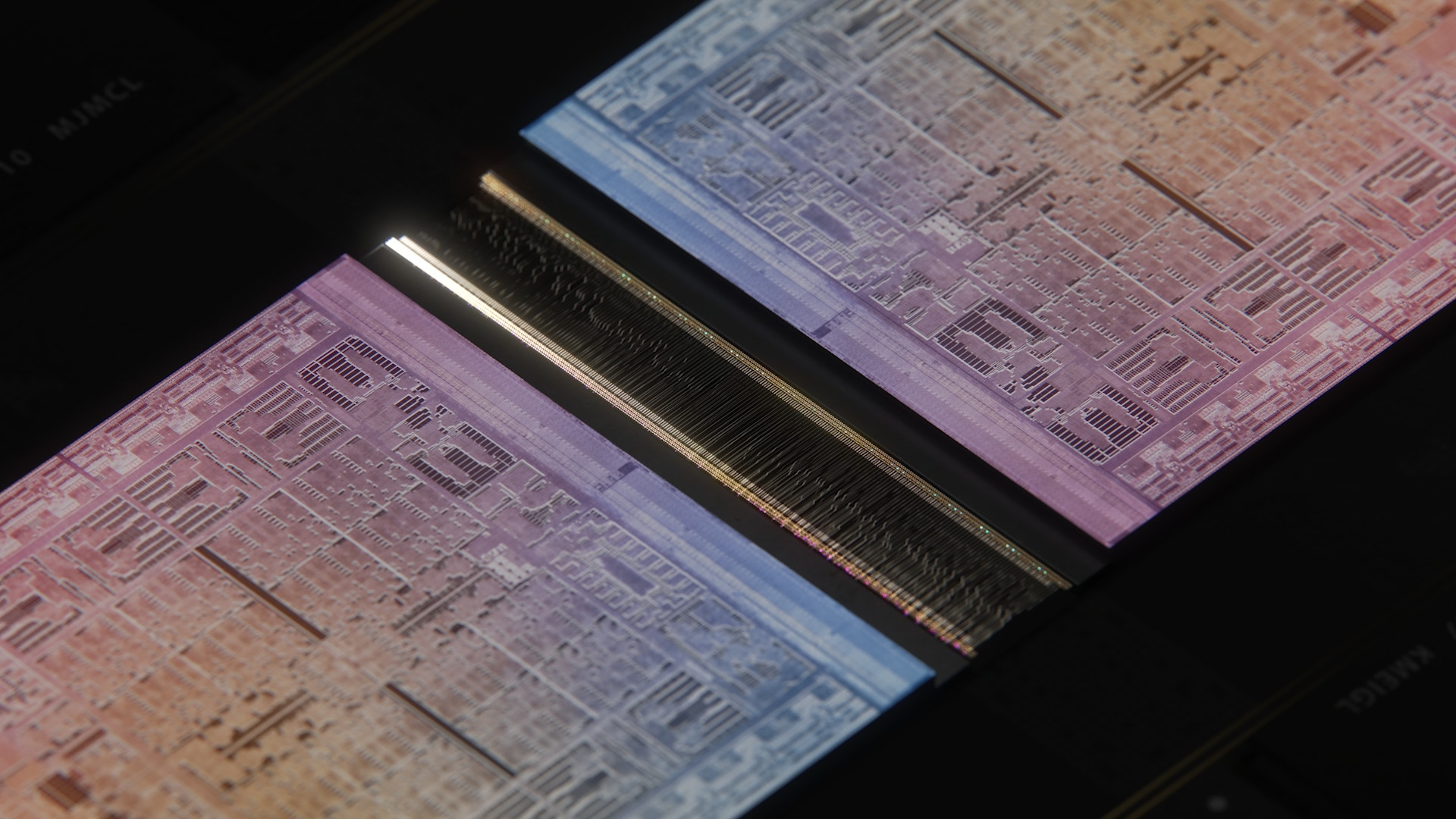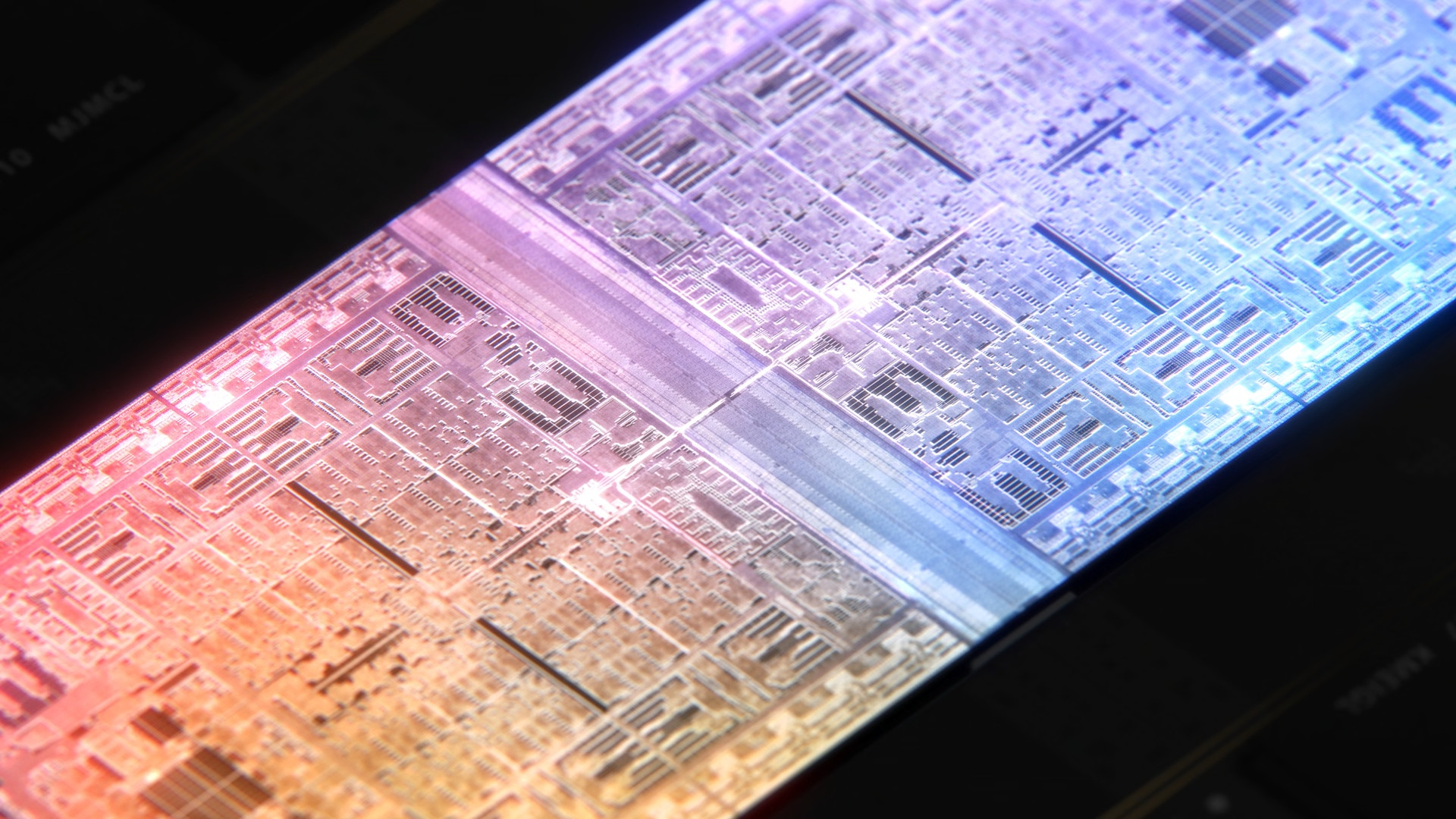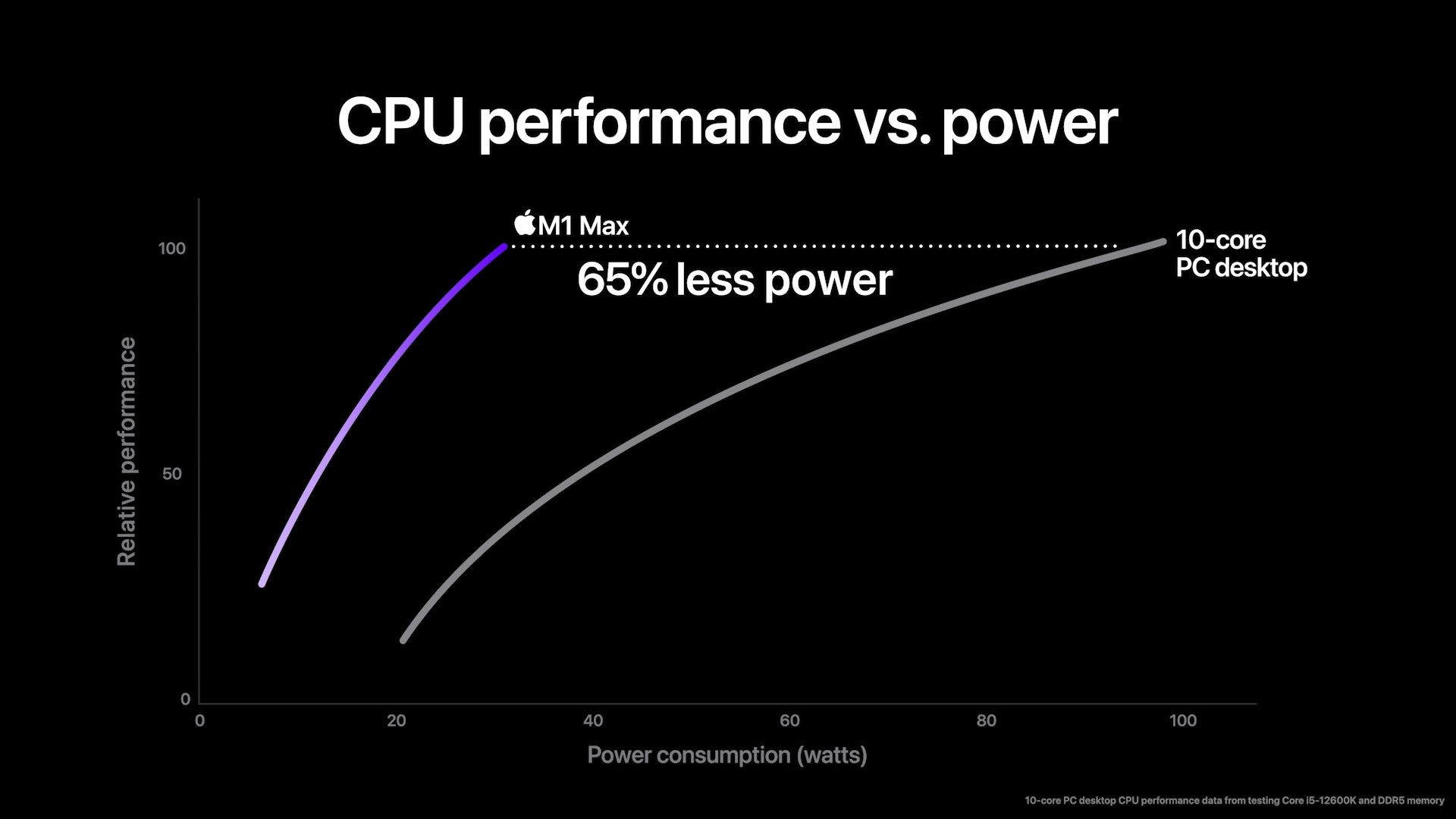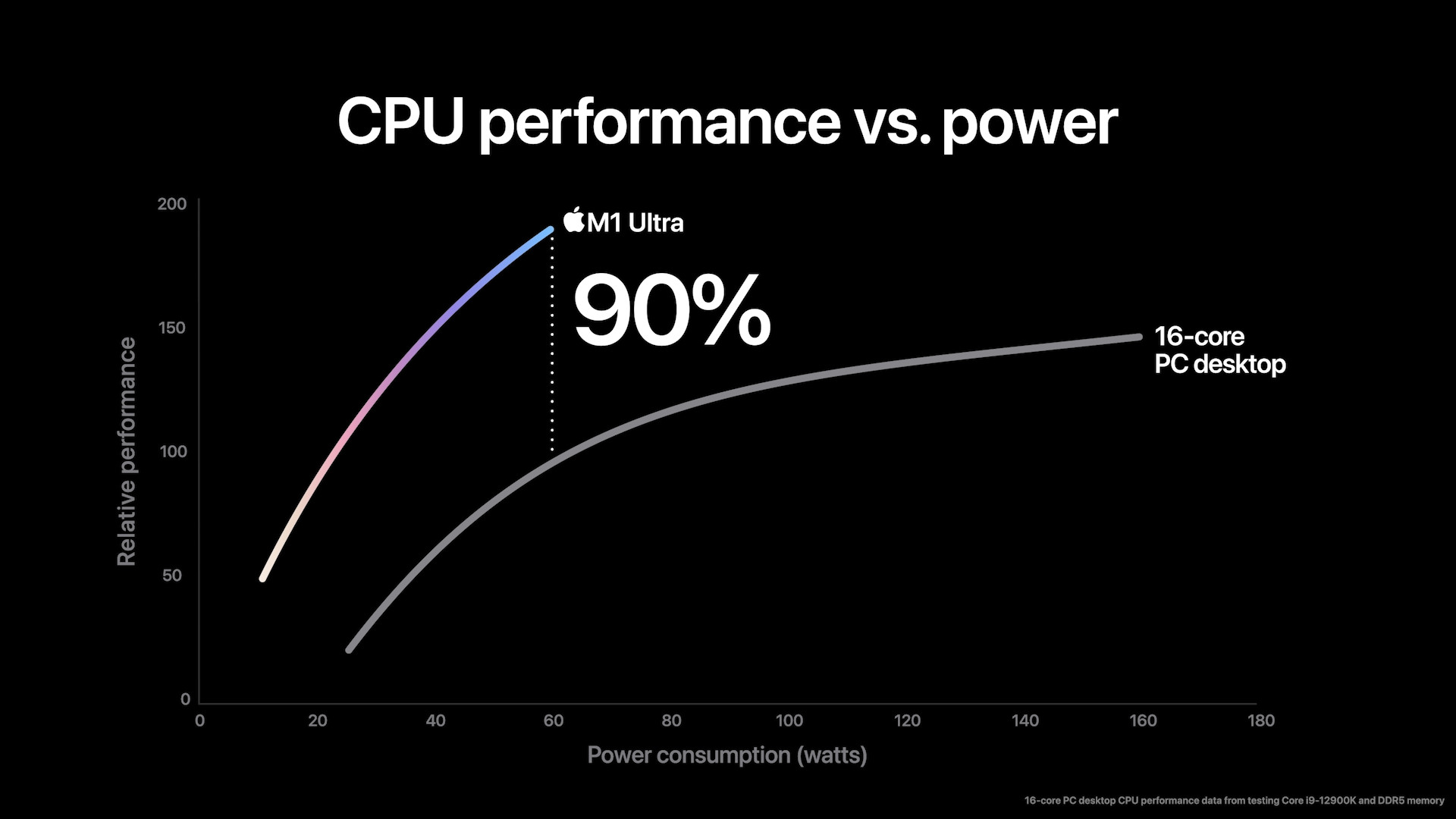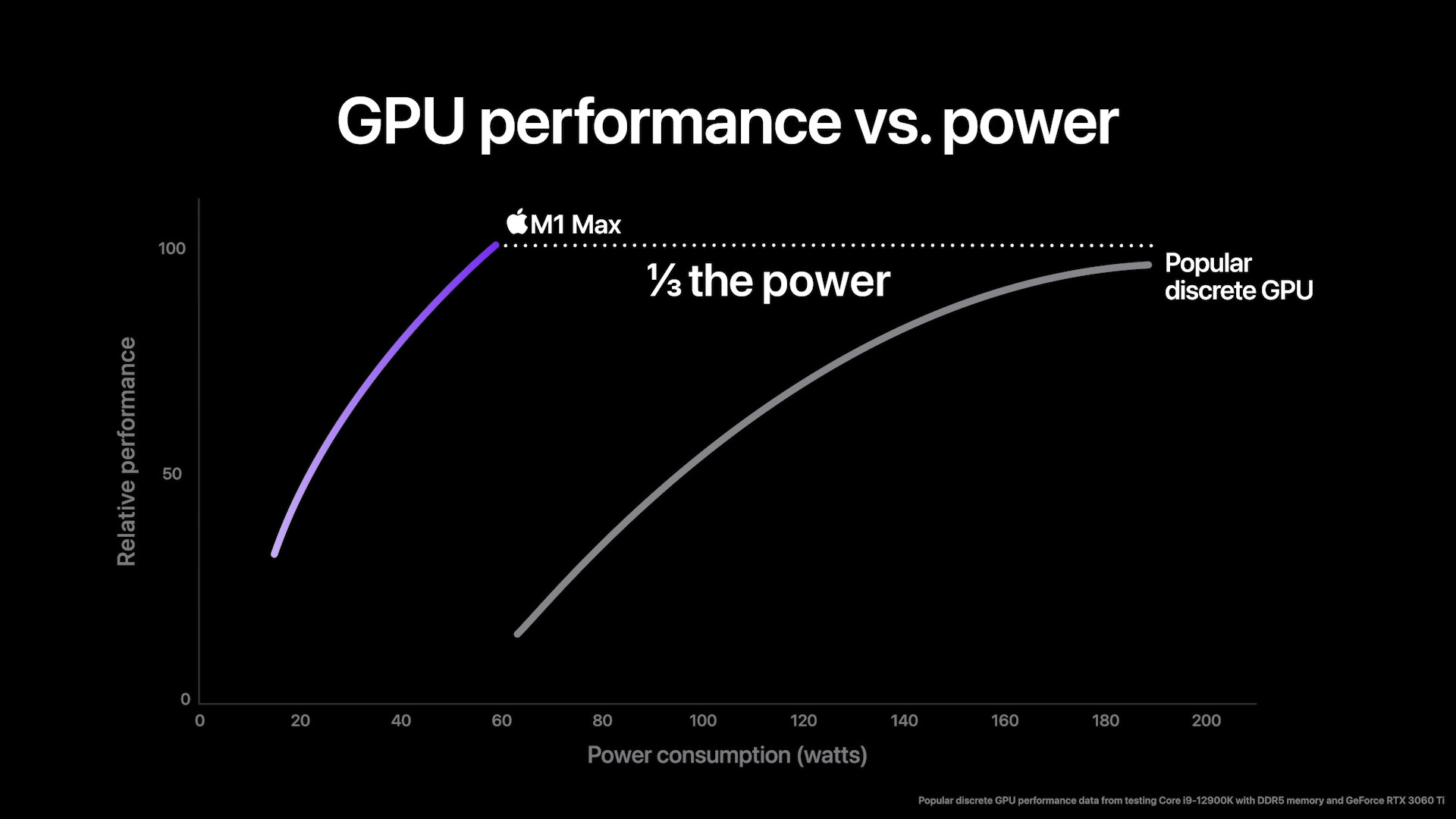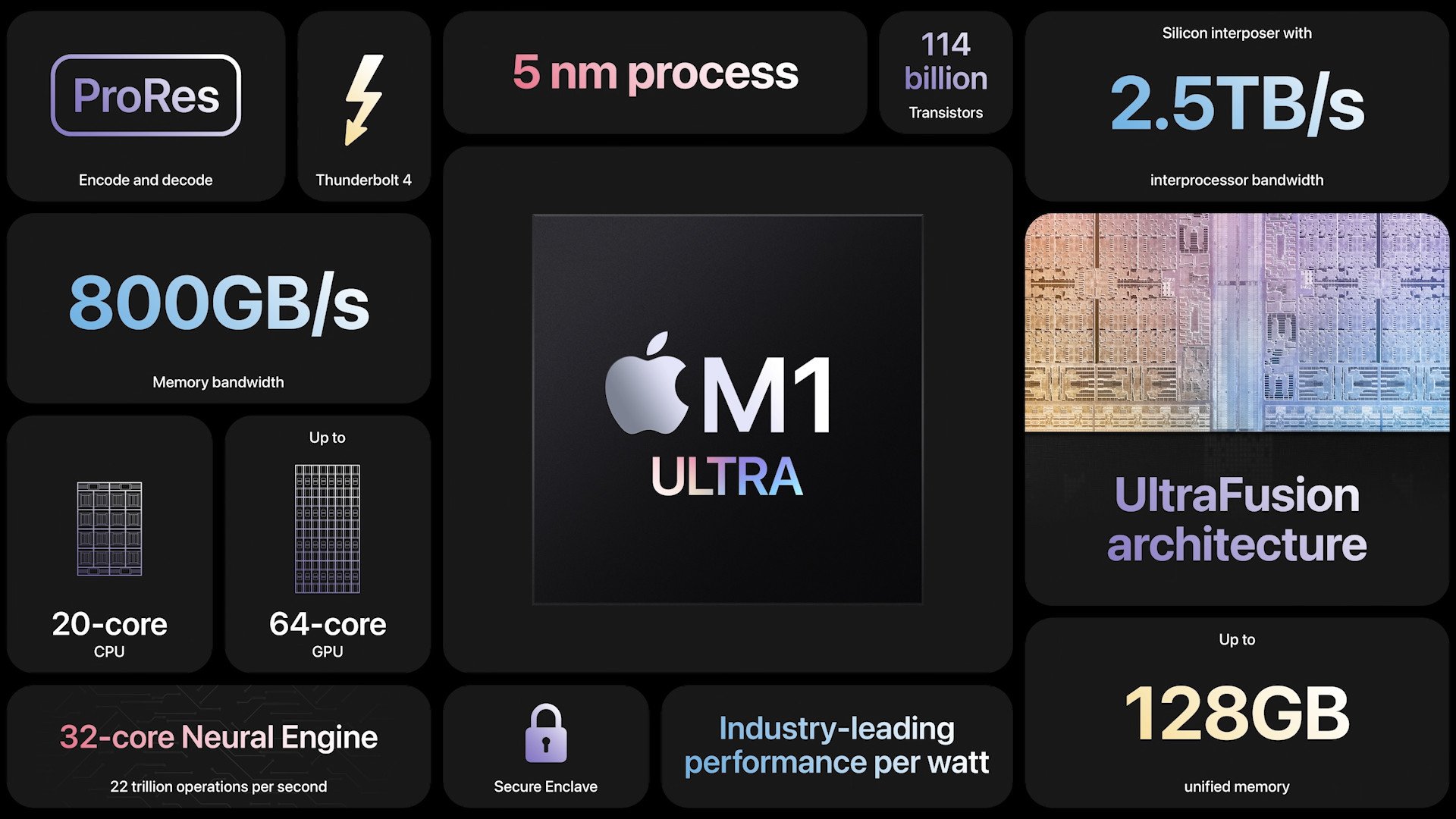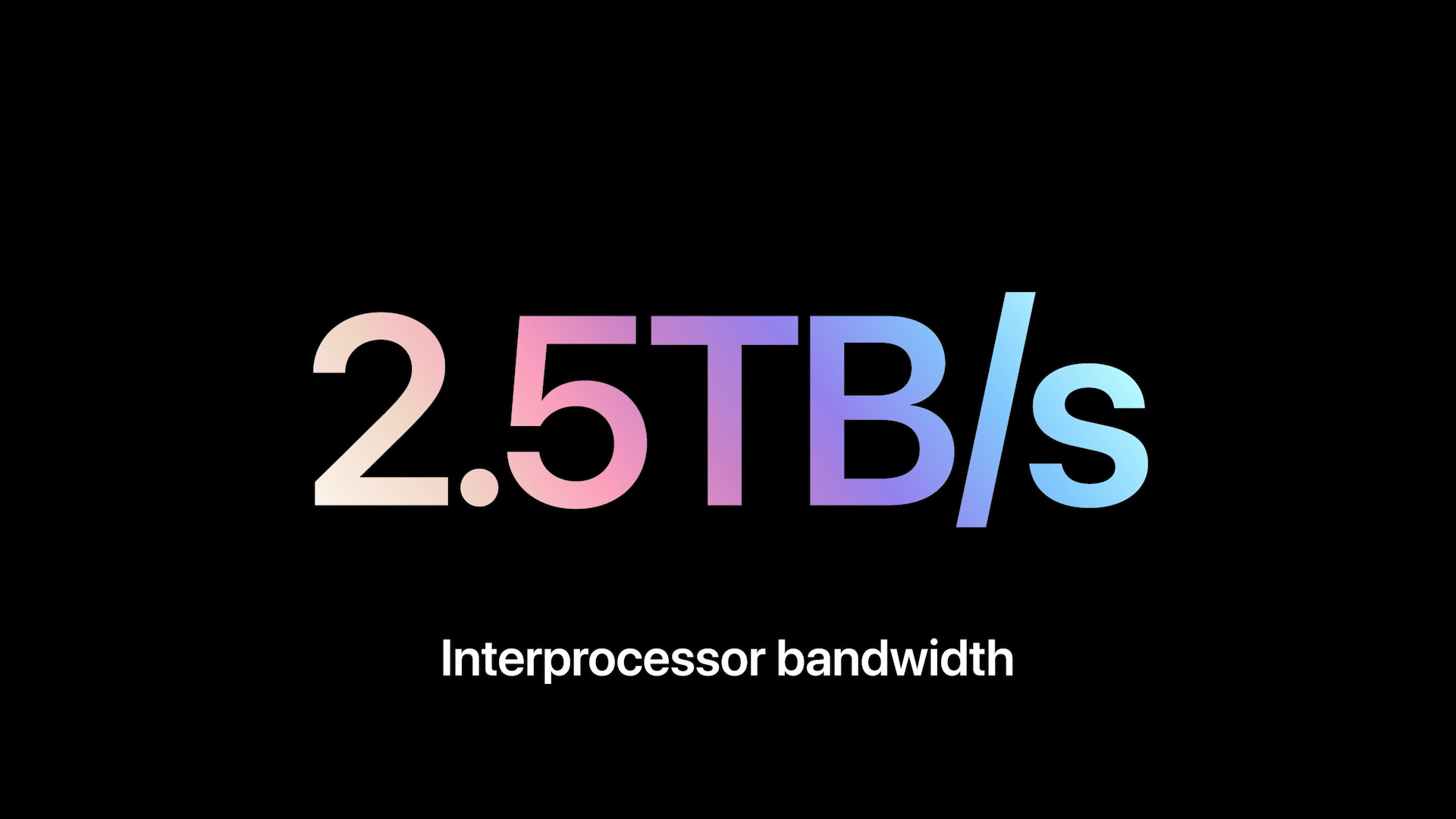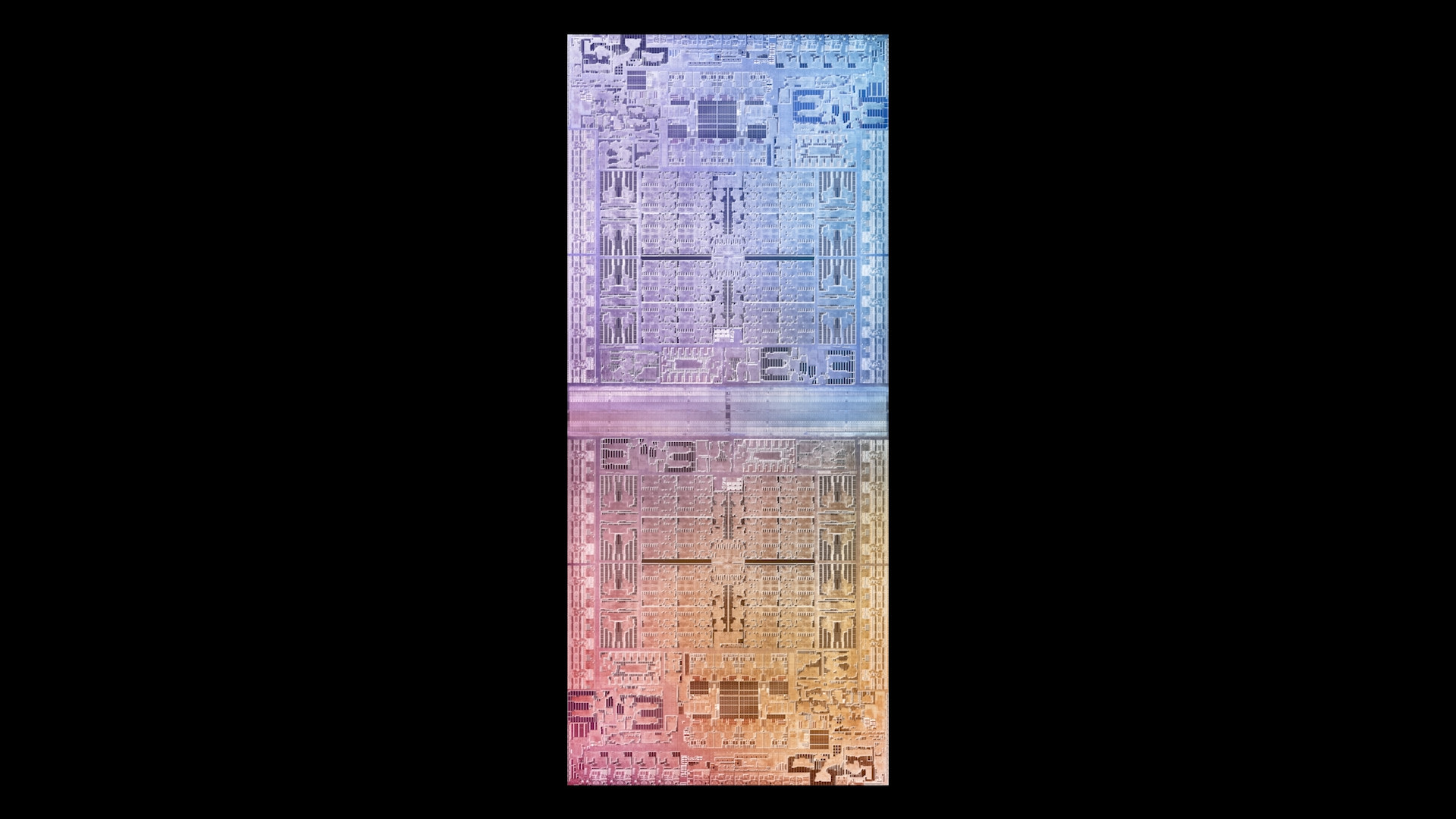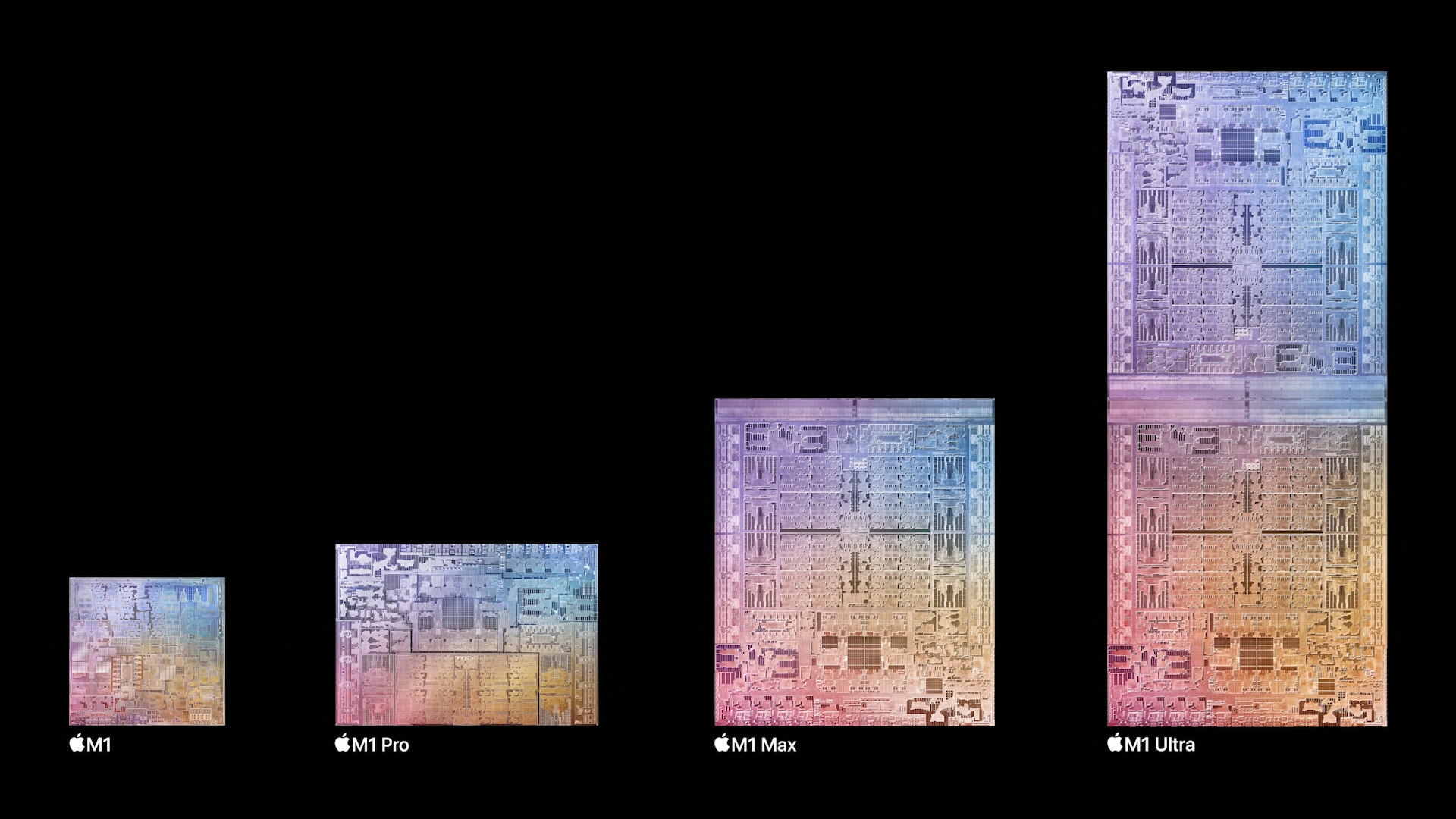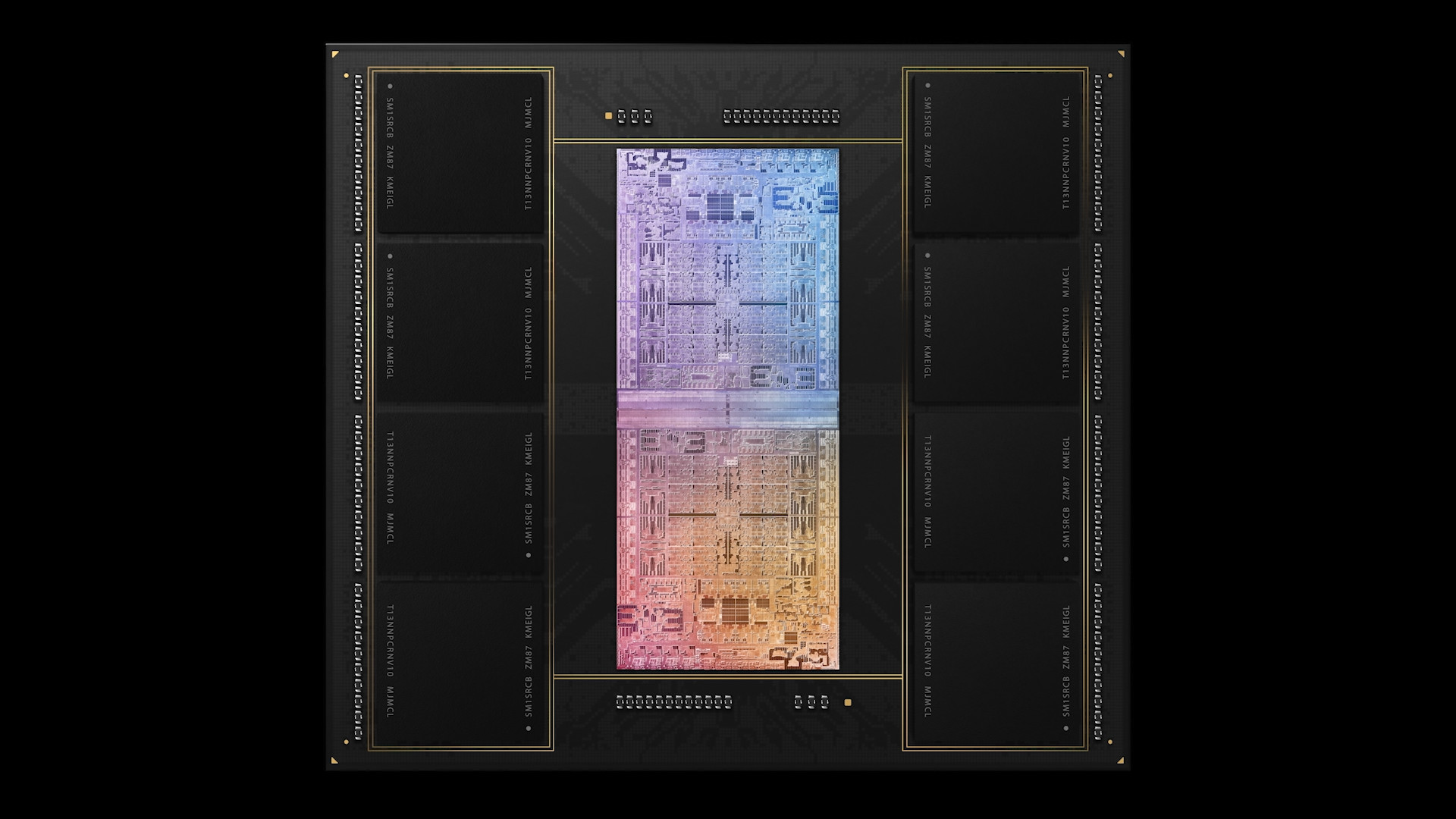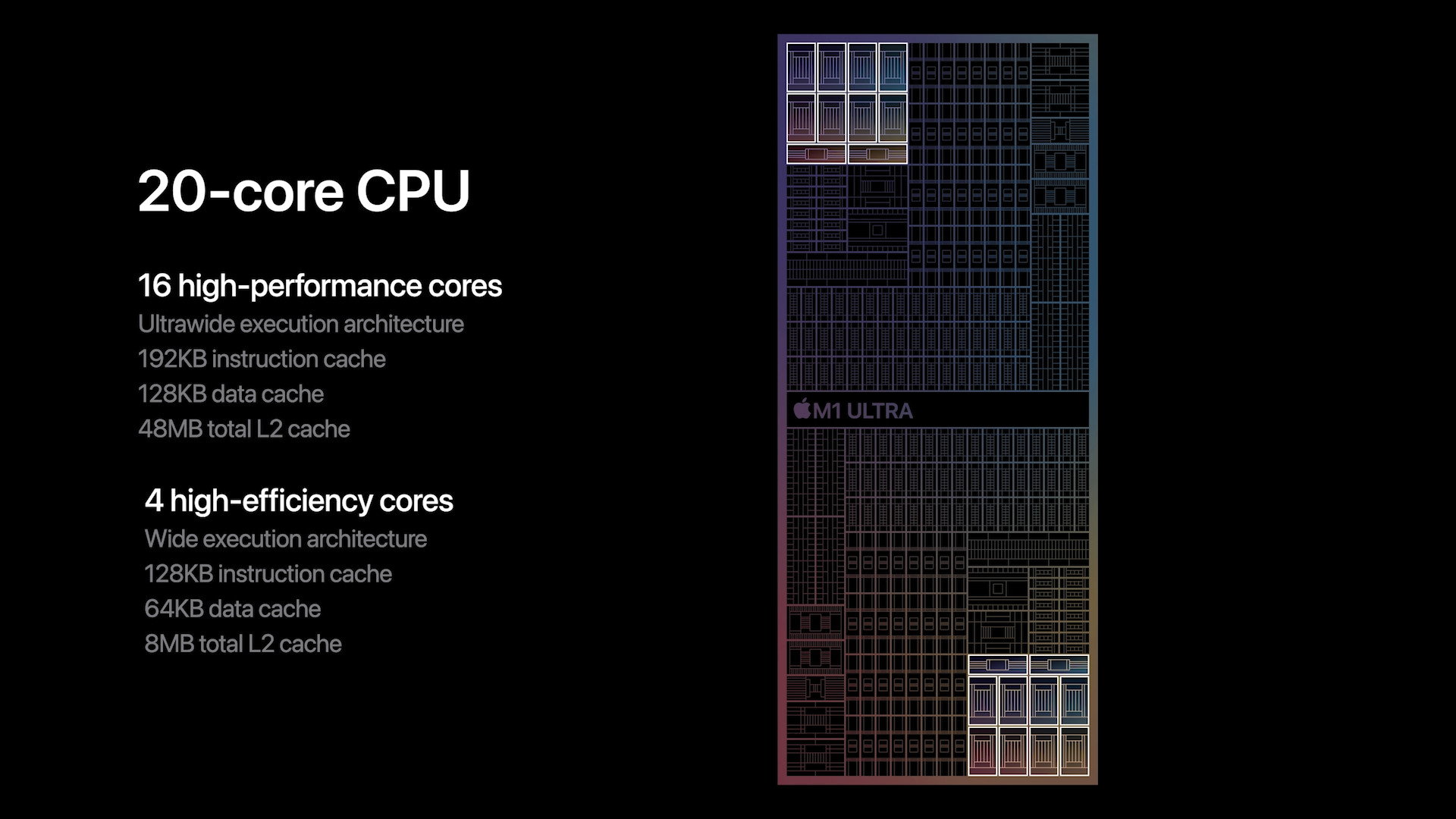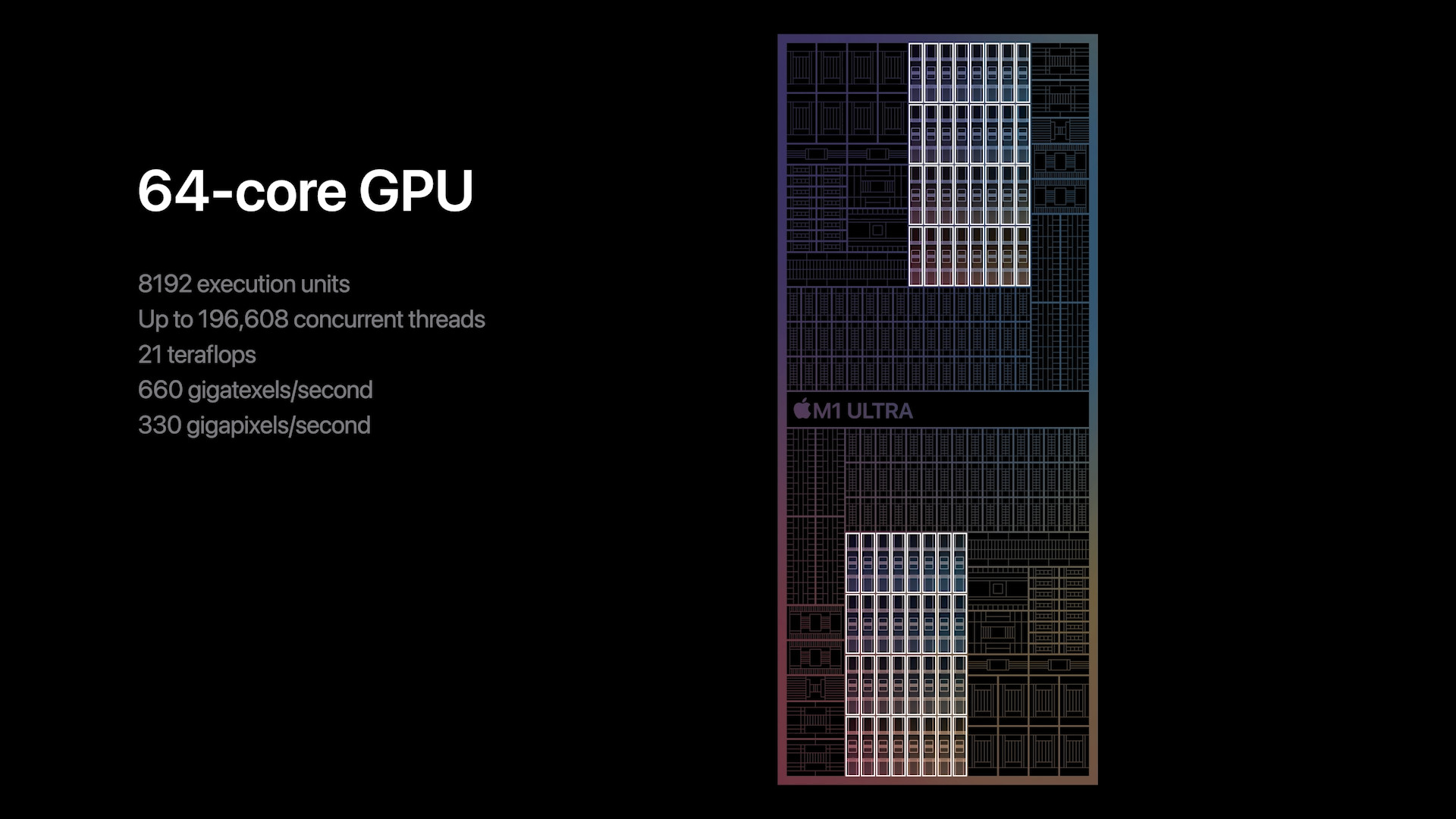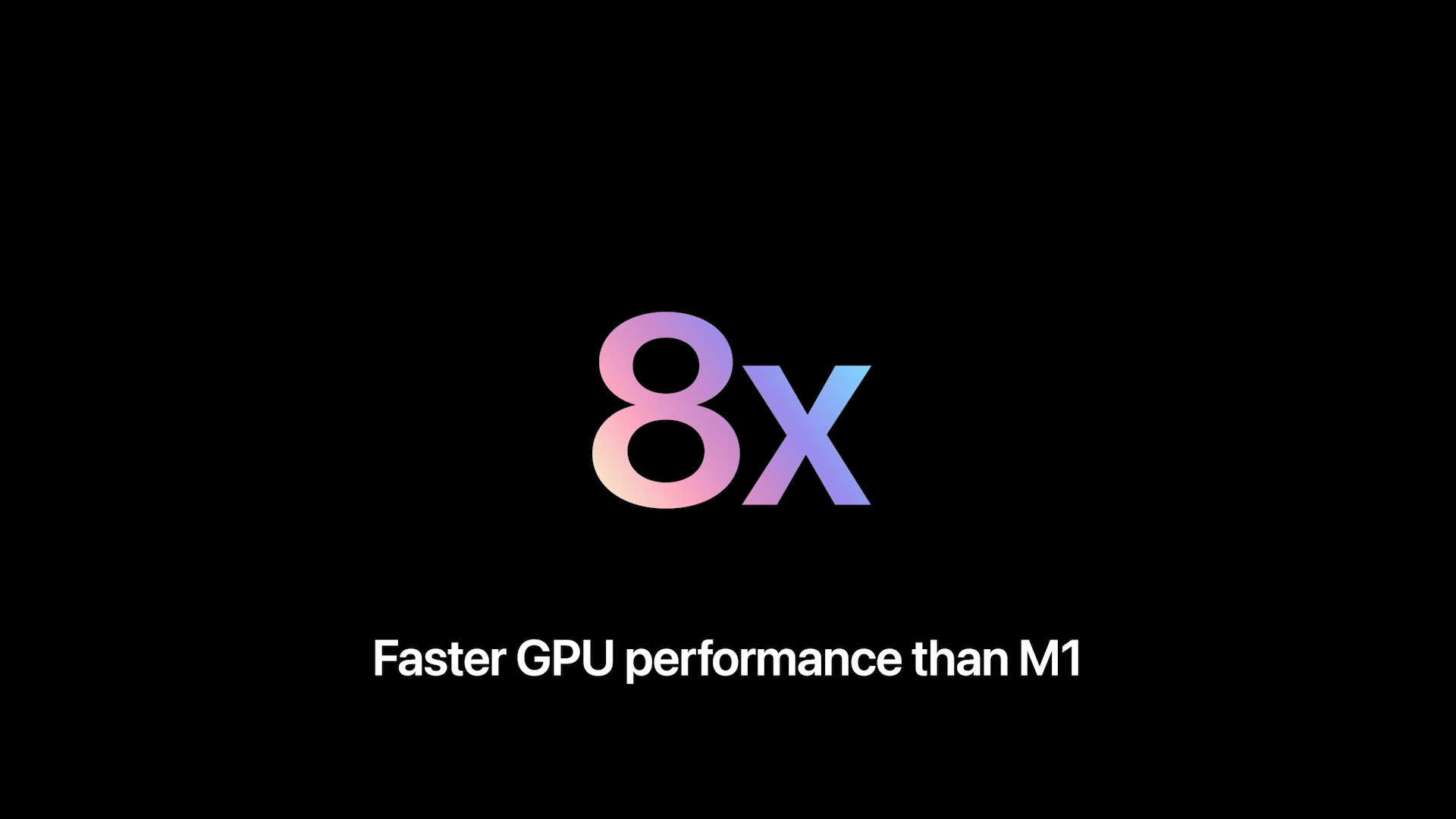At its spring Peek Performance event, Apple presented the new M1 Ultra chip, which ranks at the top of its portfolio of Apple Silicon chips, with which the company equips its computers as well as iPads. So far, this novelty is intended exclusively for the new Mac Studio, i.e. a desktop computer that is based on the Mac mini, but does not compete with the Mac Pro either.
Apple didn't introduce the M2 chip, which would rank above the M1 but below the M1 Pro and M1 Max, as everyone expected, but it did wipe our eyes with the M1 Ultra chip, which actually combines two M1 Max chips. The company is thus constantly pushing the boundaries of performance, albeit in interesting detours. Thanks to the UltraFusion architecture, it combines two existing chips and we have something new and, of course, twice as powerful. However, Apple excuses this by saying that the production of chips larger than the M1 Max is complicated by physical limits.
Simple numbers
The M1 Max, M1 Pro and M1 Ultra chips are so-called systems on a chip (SoC) that offer CPU, GPU and RAM in a single chip. All three are built on TSMC's 5nm process node, but the M1 Ultra combines two chips into one. Therefore, it is logical that it is also once as big as the M1 Max. After all, it offers seven times more transistors than the basic M1 chip. And since the M1 Max has 57 billion transistors, simple calculations show that the M1 Ultra has 114 billion. For completeness, the M1 Pro has 33,7 billion transistors, which is still more than twice as many as the base M1 (16 billion).
The M1 Ultra houses a 20-core processor built on a hybrid architecture, meaning 16 cores are high-performance and four are high-efficiency. It also has a 64-core GPU. According to Apple, the GPU in the M1 Ultra will consume only a third of the power of most graphics cards, highlighting the fact that Apple Silicon chips are all about striking the right balance between efficiency and raw power. Apple also adds that the M1 Ultra offers the best performance per watt in a 5nm process node. Both M1 Max and M1 Pro have 10 cores each, of which 8 are high-performance cores and two are energy-saving cores.
It could be interest you

M1 Pro
- Up to 32 GB of unified memory
- Memory bandwidth up to 200 GB/s
- Up to 10-core CPUs
- Up to 16 core GPUs
- 16-core Neural Engine
- Support for 2 external displays
- Playback of up to 20 streams of 4K ProRes video
Max M1
- Up to 64 GB of unified memory
- Memory bandwidth up to 400 GB/s
- 10-core CPU
- Up to 32 core GPUs
- 16-core Neural Engine
- Support for 4 external displays (MacBook Pro)
- Support for 5 external displays (Mac Studio)
- Playback of up to 7 streams of 8K ProRes video (Macbook Pro)
- Playback of up to 9 streams of 8K ProRes video (Mac Studio)
M1Ultra
- Up to 128 GB of unified memory
- Memory bandwidth up to 800 GB/s
- 20-core CPU
- Up to 64 core GPUs
- 32-core Neural Engine
- Support for 5 external displays
- Playback of up to 18 streams of 8K ProRes video
